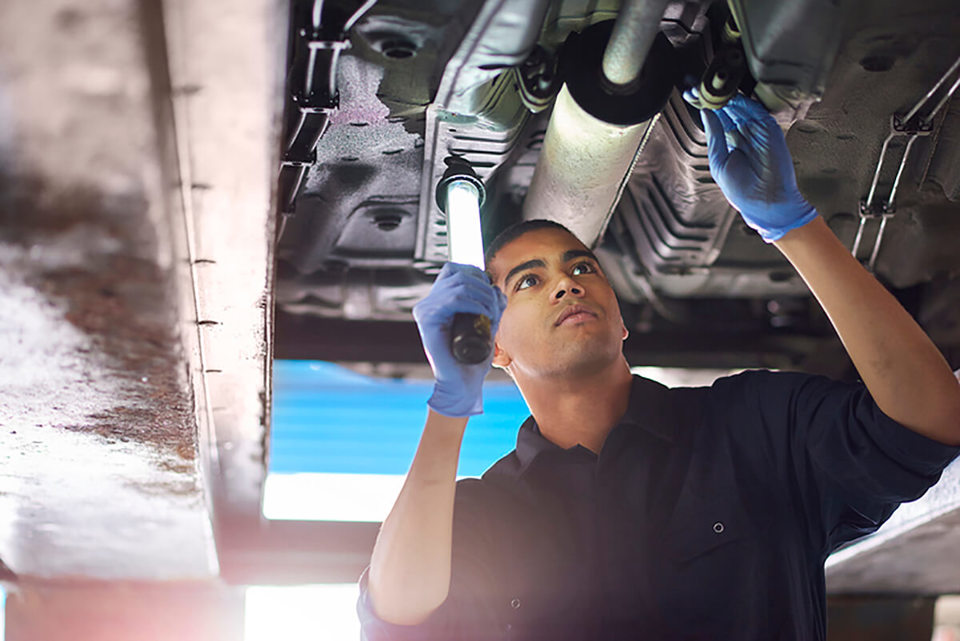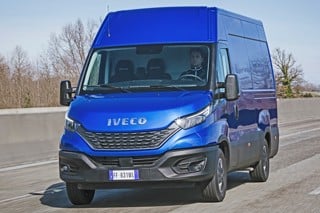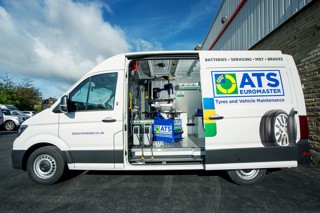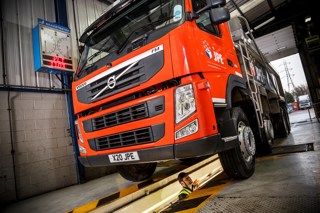Commercial fleets are being urged to plan for price pressure on labour rates and the price of parts to increase service, maintenance and repair costs (SMR).
For van fleets that lease their vehicles with maintenance included, SMR is priced into the monthly cost of the lease.
Leasing companies will look at macroeconomic factors, historic prices of parts and labour rates, survey current labour rates and look at elements like the Consumer Price Index (CPI) and inflation to help predict future SMR costs.
Fleets are also being forced to extend lease lengths because of the squeeze on the supply of new cars and vans. Longer leases, inevitably, mean extra MOTs, servicing and tyres, as well as increased wear and tear.
Paul Hollick, the Association of Fleet Professionals (AFP) chair, said: “Based on the price increases with labour rates I think we could quite easily see SMR cost increases of between 10% and 20%.
“The majority of that maintained cost will be on tyres, in particular, due to the increased cost of rubber.
"Fleets need to expect there to be a knock-on effect coming and plan accordingly.”
I247 Group, the outsourced fleet services company, recently said its customers are reporting “double-digit increases” on tyres.
This is due to price rises across materials, logistics, labour and fuel.
These increases are coupled with a change in the fleet mix with larger rim sizes and an increasing number of SUVs and electric vehicles (EVs).
While EVs feature fewer serviceable items, tyre wear can be increased due to the heavier weight of the vehicles and a high torque curve delivery that offers quick progress from a standing start.
Hollick said that while maintenance costs are expected to go up, they’re still “small beer” compared with things like the cost of diesel.
Fleets which are extending contracts while waiting for new vehicles to be delivered should look at whether SMR increases will be factored into any extensions, he added.
“The leasing company will look at contract extensions on an individual basis and take a view.
“Any increase in SMR costs on extensions depends on the relationship with the leasing company.”
Nick Hardy, Ogilvie Fleet sales and marketing director, said that, while the business is keeping a close eye on SMR budgets and how this factors into contract hire pricing, “it’s not currently an area of worry”.
Construction and engineering company Altrad has a fleet of approximately 800 vans and all repair and maintenance (R&M) is included on leased vehicles.
Matt Hammond, Altrad head of fleet and plant, told Commercial Fleet he is expecting price increases when it the time comes to renew or order new vehicles, although currently it is the leasing company that is exposed to any price increases.
WHAT ELEMENT IS SMR?
However, he said it is difficult to determine what is a rental increase as part of the monthly cost and what is an SMR increase.
Hammond added: “A fleet with payas-you go maintenance packages will be far more exposed to current price fluctuations. We take a fully maintained package on leased vans because you have certainty on budgets, rather than pay-as-you-go.”
Countryside Partnerships has 65 vans and new vehicle orders have tended to be in batches of around 10 so the fleet will feel the cost increases gradually as vehicles are replaced.
Chris Connors, Countryside Partnerships head of facilities and fleet, also leases vans with R&M included in the contract price. He said: “We haven’t seen the cost rises hit us yet but we’re preparing for it. Anticipating a cost increase has made us review our processes on SMR and look at the model we have. Can we take a step back and can we manage this in a different way?”
Connors ordered new vans for the business this year, but it was early enough that the knock-on effect with increased SMR hasn’t bitten yet.
Where Countryside has had to extend contracts for its vans, this has been more of an “informal overrun” where prices have remained the same on a monthly basis, rather than being recalculated to account for any SMR price increases.
Shaun Atton, Auto Windscreen head of fleet and facilities, is in a position where the business uses its own in-house mechanics to manage servicing for its 300-strong van fleet.
He said: “The biggest increase you’re looking at is labour costs when you go external for SMR.
“We control our labour costs and how many technicians we have working for us. We have the ability to scale up and down with technicians if we need to, dependent on demand, so it gives us much more control.”
Another factor Atton sees as a potential impact to SMR costs is moving from a four-year lease to five years on new vans. This is after moving from three-to-four-year leases without a material impact on SMR costs.
He said: “Moving to five years has become a bit of an experiment we’ve been forced into due to not being able to get hold of new vans, so we’ll see how that goes.
“There is a cost saving on the lease by spreading it over five years and this could help offset any future SMR increases.”
END-OF-CONTRACT CHARGES
Hollick said there has been a history of some leasing companies looking to claw back a loss in any profits seen from areas like SMR with increased end-ofcontract (EOC) charges.
Ogilvie has an EOC process where, if damage is charged, it will only be by amounts set out at the start of the contract on a predetermined matrix which relates to loss of value, rather than any inflated repair costs.
Hardy said: “I think there was a wider problem with inflated EOC three or four years ago, but I think this has largely been stamped out now.
When we’re talking to conquest companies that are leaving other leasing companies, they’ve been quite quiet about EOC being an issue.”
Connors said Countryside manages EOC very closely.
He said: “I’m fortunate that our fleet coordinator is very good at questioning EOC and we look at what we’ve paid previously for similar items.
“We are going to see repair bills go up, so I think fleets should stay vigilant in areas like EOC.”
Alison Bell, operations director at Venson Automotive Solutions, said judicious fleet management can help to keep SMR costs under control, particularly with van fleets that are extending contracts.
She said: “The first step in planning SMR cost savings is to examine the overall fleet in a holistic way.”
Bell suggested van fleets carry out regular mileage inspections, avoid overloading vehicles to reduce tyre wear and to look at training to ensure drivers understand the part they can play in reducing SMR costs.























Login to comment
Comments
No comments have been made yet.